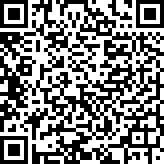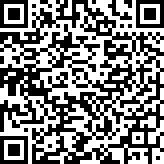 |
|
Letter to the Editor
| ||||||
| Respiratory patterns in older patients following cardiac surgery: Trial of the novel respiR8® monitor | ||||||
| Rachel McNulty1, Weihong Du2, Zoka Milan3, Gudrun Kunst4 | ||||||
|
1MBBS, Junior Doctor, St George’s Hospital, London, UK 2BSc, Medical Student, Medical Education Department, Kings College London, UK 3MD, PhD, FRCA, FRCIM, Consultant Anaesthetist, Anaesthesia Department, Kings College Hospital, London, UK 4MD PhD DEAA FRCA FFICM, Consultant Anaesthetist, Anaesthesia Department, Kings College Hospital, London, UK | ||||||
| ||||||
|
[HTML Abstract]
[PDF Full Text]
[Print This Article]
[Similar article in Pumed] [Similar article in Google Scholar] |
| How to cite this article |
| McNulty R, Du W, Milan Z, Kunst G. Respiratory patterns in older patients following cardiac surgery: Trial of the novel respiR8® monitor. Edorium J Anesth 2017;3:12–14. |
| To the Editors, |
|
Respiratory rate (RR) is an important vital sign – useful to many specialties including respiratory, anesthetics and cardiology. Little is known about the postoperative RR patterns in elderly patients after cardiac surgery. Therefore, this preliminary study assessed RR continuously in older patients directly after tracheal extubation following cardiac surgery using a non-invasive monitoring device that measures the humidity of exhaled air, the respiR8® (Anaxsys, Surrey). The respiR8® measures the RR independently from chest wall movements; therefore, it can detect both central (e.g., opioid-induced) and peripheral (e.g., obstructive) apnea. We also compared the results obtained with the respiR8® monitor with the ECG-derived RR displayed on a standard recovery room monitor. Twelve consecutive patients over the age of 60 years undergoing elective cardiac surgery were monitored in August and September 2014 at King’s College Hospital, London. Their average age was 70.7±9 years and average body mass index was 25.3±4.6; one patient had a history of chronic obstructive pulmonary disease and eight had histories of obstructive sleep apnea; there were six non-smokers and two active smokers. Due to the small sample size it was not possible to control for these factors. It was a pilot study, intended to give results of interest in the planning of larger studies. They underwent the following procedures: coronary artery bypass graft (CABG) in three patients, combined CABG and valve replacement in five, valve replacement in three, and closure of an atrial septal defect in one. All operations were performed on cardiopulmonary bypass with standard anaesthetic techniques. Postoperatively, all patients were transferred to the cardiac recovery unit, where they were ventilated for up to six hours. Once weaned off the ventilator, the patients were given an oxygen mask with the respiR8® device attached. Patients were assessed using the respiR8® device within one hour of extubation. The respiratory rate using both the respiR8® device and an electrocardiography (ECG) monitor and oxygen saturation using pulse oximetry were recorded every 10 minutes during the first hour of monitoring. Standard postoperative care was maintained throughout the monitoring period. Each patient received supplemental oxygen via a face mask. Routine observations and investigations were performed, including regular arterial blood sampling. Analgesia was maintained with continuous morphine infusion at a dose of 0.5–2 mg/h and regular intravenous paracetamol 1 g. No other drug with a significant impact on breathing pattern was administered during this period. Cardiovascular stability was maintained in all patients as per standardized protocols. Apnea was defined as an RR ≤6 breaths/minutes for ≥10 s [1], tachypnea as an RR ≥ 18 breaths/min, and bradypnea as an RR ≤10 breaths/min. Tachypnea, bradypnea, and apnea were referred to as abnormal respiratory events (AREs). Within the first hour after extubation, each patient had at least four AREs: 8 had a mean of 5.1 episodes of bradypnea, 9 had a mean of 2.9 episodes of tachypnea, and 8 had a mean of 2.5 episodes of apnea. Seven patients experienced all three AREs. All patients were hemodynamically stable during the observation period with normal mean arterial pressure, adequate filling pressure, and normal heart rate. All patients received a mean dose of 1.3 mg/h of morphine in order to provide analgesia. The arterial blood gas results assessed during the observation period revealed that two patients had a lower than normal pH. There was a difference in the clinical information gathered by continuous as opposed to intermittent monitoring. Abnormal patterns were more likely to be identified by continuous monitoring when compared with intermittent RR monitoring. Out of a possible 72 opportunities (six per patient), the electrocardiography (ECG) failed to provide any reading at all on 27 occasions. The ECG-derived RR monitoring showed larger negative deviations, that is, lower RRs. All of our patients experienced great variability in RRs and AREs during the one-hour observation period after tracheal extubation. All patients had just undergone major cardiac surgery and were older than 60 years of age. There are many possible reasons for AREs, including surgical stress, post-reperfusion syndrome, pain, agitation, metabolic acidosis and continuous opioid infusions. The clinical significance of these unexpected results warrants further investigation. Our findings concurred with recent studies. For example, Smith et al. identified a group of patients whose RRs were erratic over the measurement period. These patients showed greater variability than healthy volunteers [2]. In our study, the respiR8® was more sensitive at detecting AREs than ECG-derived RR monitoring. In a similar study comparing ECG-derived RR monitoring with respiR8® monitoring, ECG-derived readings were prone to artefacts. Common movements such as coughing and shivering led to bias in the results [3]. ECG-derived RRs were more likely to fail to give any reading at all. When readings were available, they were likely to differ from those given by the respiR8® monitor. In the same study, oxygen saturation monitors proved unreliable. On seven occasions where patients had at least one episode of apnea, their oxygen saturation levels were recorded as 94% or above, similar to our study. While ECG-derived RR monitoring has been shown to be a weak indicator of respiratory dysfunction, we found that the respiR8® was reliable and easy to use. Our study was a preliminary study and had a number of limitations. The study did not control for confounding factors such as previous history of respiratory compromise or surgical technique. The study did not deal with any suggested interventions in order to normalise RRs. In addition, postoperative RR-related complications, for example, severe pain or pneumothorax, were not recorded. Postoperative outcome variables, such as postoperative delirium, and other organ morbidity variables were not assessed either. In conclusion, our preliminary study showed a high incidence of AREs one hour after cardiac surgery in older patients. The continuous respiR8® monitor was more sensitive than a standard ECG-derived RR monitor. Abnormal patterns were more likely to be identified by continuous monitoring when compared with intermittent RR monitoring. Given the small sample size, the results cannot be generalized. However, they do provide helpful preliminary data for the design of larger observational RR-related clinical outcome studies. Keywords: Postoperative, Respiratory rate, RespiR8® |
|
REFERENCES
|
|
|
[HTML Abstract]
[PDF Full Text]
|
|
Acknowledgements
Dr. Georgina Cubas for her help with data collection and Professor Ravi Mahajan for his encouragement. |
|
Author Contributions
Rachel McNulty – Substantial contributions to conception and design, Acquisition of data, Analysis and interpretation of data, Drafting the article, Revising it critically for important intellectual content, Final approval of the version to be published Weihong Du – Substantial contributions to conception and design, Acquisition of data, Analysis and interpretation of data, Revising it critically for important intellectual content, Final approval of the version to be published Zoka Milan – Substantial contributions to conception and design, Drafting the article, Revising it critically for important intellectual content, Final approval of the version to be published Gudrun Kunst – Substantial contributions to conception and design, Acquisition of data, Analysis and interpretation of data, Drafting the article, Revising it critically for important intellectual content, Final approval of the version to be published |
|
Guarantor of Submission
The corresponding author is the guarantor of submission. |
|
Source of Support
None |
|
Conflict of Interest
Authors declare no conflict of interest. |
|
Copyright
© 2017 Rachel McNulty et al. This article is distributed under the terms of Creative Commons Attribution License which permits unrestricted use, distribution and reproduction in any medium provided the original author(s) and original publisher are properly credited. Please see the copyright policy on the journal website for more information. |
|
ABOUT THE AUTHORS
| ||||||||||||
| ||||||||||||
|
|








